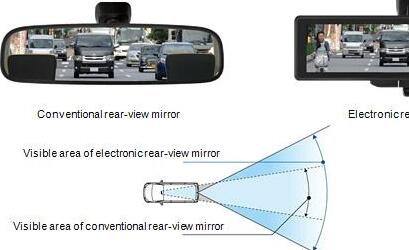
Panasonic Corporation announced that it will start mass-production of electronic rear-view mirrors in September 2017, the first product jointly developed with Ficosa International S.A., a tier-one supplier of automotive parts and systems in Spain.
Following the developments from the previous post, Panasonic has given out the detailed features of the electronic rear-view mirrors.
In June 2015, Panasonic invested in the Barcelona-based company, which supplies automotive mirrors to a wide variety of carmakers in Europe and other countries, and founded a business partnership between the two companies. Their ties strengthened in July 2017, when Ficosa became a consolidated subsidiary of Panasonic and a key business division of its Automotive & Industrial Systems Company.
Now, the electronic rear-view mirror integrating Ficosa’s mirror technology and Panasonic’s camera and liquid crystal display technologies have been adopted by Toyota Motor Corporation as genuine parts.
The electronic rear-view mirror uses a camera with a wide-angle lens that captures a wide rearward area, offering a wider viewing angle than conventional rear-view mirrors. By installing the camera inside on the rear window, this mirror provides a safer and clearer rearward view that is not obstructed by rear-seat passengers.
Panasonic and Ficoso will continue to step up their collaboration to expand their lineup and sales of jointly developed products for automakers.
Product Features:
1. The wide-angle lens camera provides a wide rearward field of vision and improves visibility.
Using a wide-angle lens camera, the electronic rear-view mirror shows a wider rearward area at a longer distance (horizontal direction) behind the vehicle and improves visibility of hard-to-see areas diagonally behind the vehicle, compared to conventional rear-view mirrors.
(Even electronic rear-view mirrors have blind spots.)
2. The camera installed on the rear window is not obstructed by rear-seat passengers, and reduces blind spots.
By installing the camera inside on the rear window, the electronic rear-view mirror reduces rear blind spots. Unlike conventional rear-view mirrors, this rear-view mirror provides a rearward view, fed by the camera, unobstructed by rear-seat passengers or objects present in the vehicle.
3. The high-sensitivity camera provides a clear view at night or in a tunnel.
The camera with high-sensitivity obtains clear images during nighttime driving or when driving through a tunnel. The camera switches to the nighttime mode in conjunction with the headlight switch and reduces headlight glare seen when using conventional rear-view mirrors.